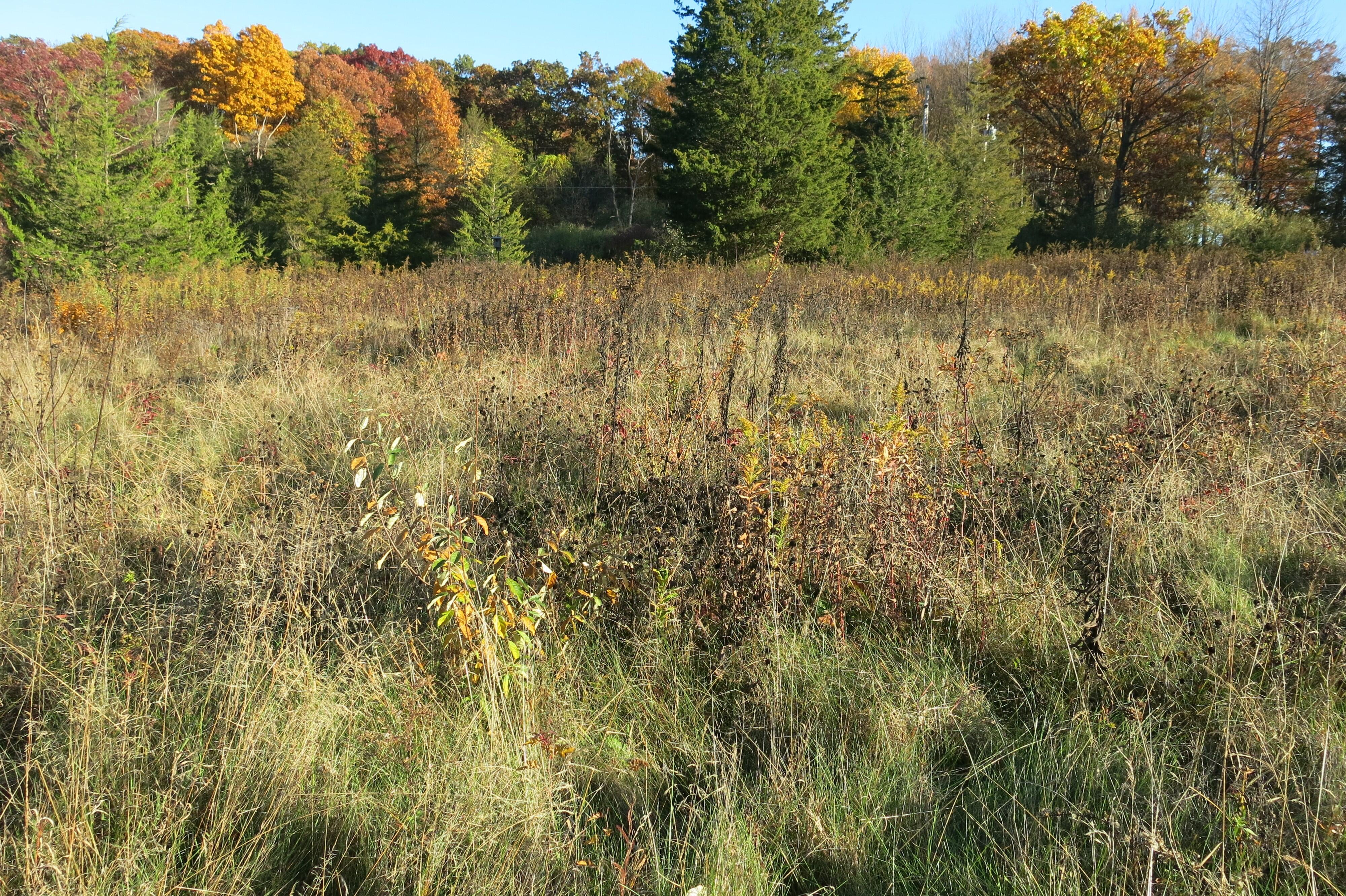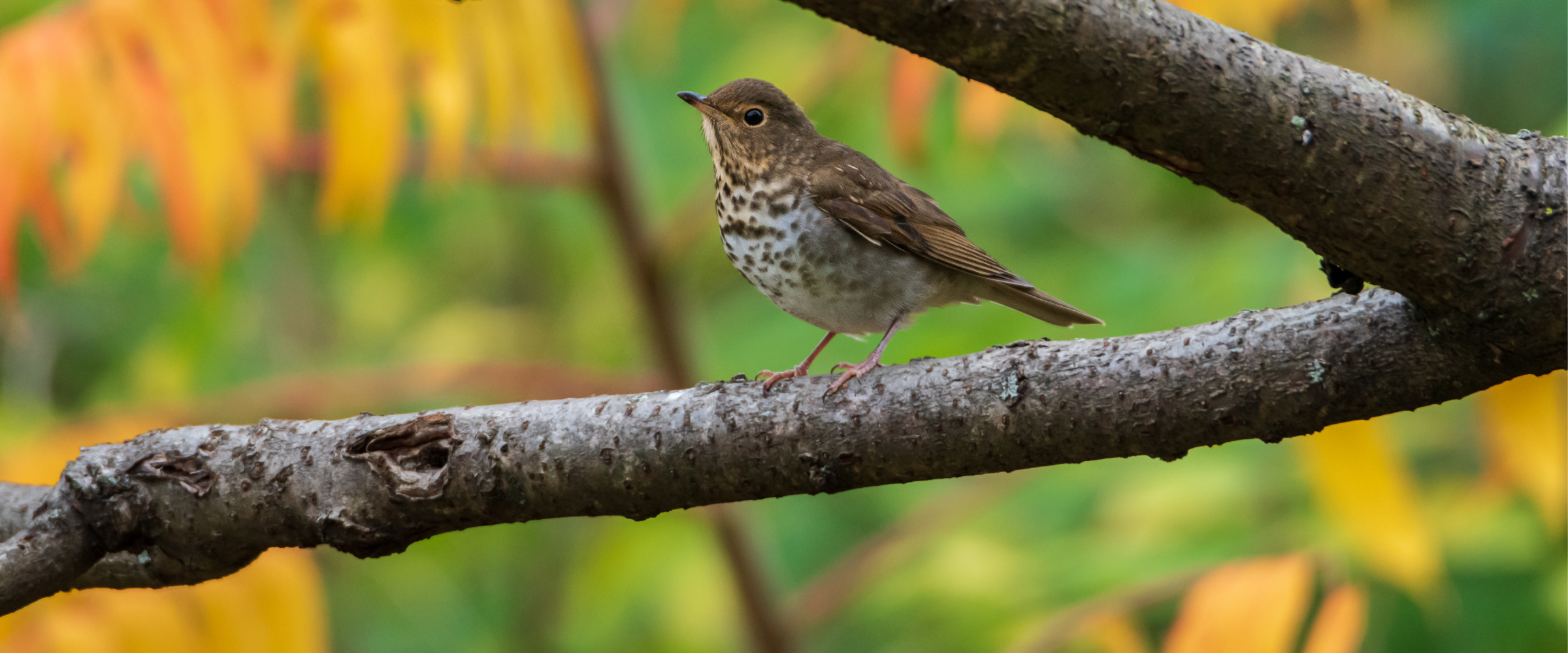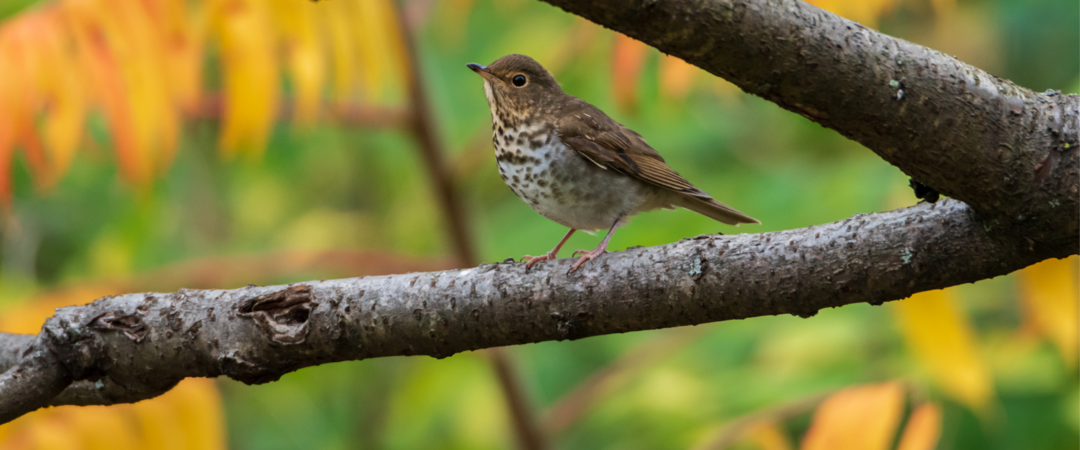On September 15, just one month after putting up the Sharon Audubon Center’s Motus tower, the first bird was "ping'd."
That bird was a Swainson's Thrush wearing a nanotag, a tiny radio tracking device (often as light as an aspirin tablet) that sent a ping to the Motus tower's antenna, and ultimately to a public database on motus.org. The thrush was on its way south for fall migration, pinging nine towers in Maine, Connecticut, New Jersey, Pennsylvania, Maryland, and finally, Costa Rica.
Whether this bird will overwinter in Costa Rica or another location in Central or South America, we can't be sure. But the network of Motus towers is growing, and with it, important information about migratory birds and the habitat they depend on throughout their full life cycle
MAY 22, 2022
The Swainson's Thrush is tagged and released at the Thayer Brook Conservation Area - Massachusetts
Desiree Narango, PhD is a conservation scientist at the Vermont Center for Ecostudies studying interactions between plants, insects, and birds to inform how we manage wildlife habitat in an urbanized and changing world. As part of her post-doctoral work at UMass Amherst, Narango tagged migratory birds in Springfield, MA to study how insect food availability in urban and rural forests impacted the birds' stopover time to rest and refuel in that habitat.
“Swainson’s Thrush are the best, because they can carry tags that are big enough to last a long time to get amazing data,” Narango explains. “We put .66 gram tags – equivalent to less than the weight of a paperclip – on these birds, and the tags collect detections for >360+ days, which means we get Motus pings during both spring and fall migration for the same birds.”
“This Swainson’s Thrush was tagged at a small community forest that was managed for high oak tree density. Compared to other tree types in the region, oaks support more caterpillars and spiders, which are high-protein foods for birds -- an important nutrient to complete long-distance migratory flights. This thrush stayed in Springfield, MA for 2-3 days, suggesting insect food availability was high, although we are currently working on analyzing exactly what insects these birds are eating during stopover events.”
SEPTEMBER 11
Valentine Farm: Bethel, Maine
After receiving its tag in May, the Swainson's Thrush most likely spent the breeding season in Northern Maine or farther north in Canada. These birds nest and raise their young mainly in coniferous forests.
SEPTEMBER 14
Deer Pond Farm: Sherman, CT
Not since 2019 has a Swainson’s Thrush been ping’d by the Deer Pond Farm Motus tower, owned and operated by the Connecticut Audubon Society. In the meantime, Chimney Swifts and Rusty Blackbirds have topped the lists, along with a handful of White-throated Sparrows in 2020.
SEPTEMBER 15
Sharon Audubon Center - Sharon, CT
"There's a lot that we still don't know about the billions of birds that migrate to and from Canada all the way to places as far as Chile or Argentina. That's why we're working to understand their movements, so we can do a better job taking care of the 'hotels and restaurants’ in forests and along our coasts, crucial places that birds need to survive on their long journeys," said Aurelio Ramos, senior vice president of Audubon Americas.
The tower at the Sharon Audubon Center is being used to “better connect people to nature, connect people to Audubon's conservation work in northeastern forests especially, and connect with other people who are doing this work all along the migratory flyways of the birds we care about,” says Eileen Fielding, the Center’s director.
SEPTEMBER 22
Mount'n'meadow - New Jersey
Dennis Briede owns about nine acres of land at the base of the Kittatinny Mountains in New Jersey, about 920 feet above sea level. When the Northeast Motus Collaboration approached him about adding a tower to his property, he immediately felt it was a natural fit.

Dennis has been actively managing the habitat across his property for years: “I’ve removed invasive plants, created vernal ponds as part of the U.S. Fish and Wildlife Service’s Partners for Fish and Wildlife Program, restored a meadow, and planted native wildflowers. I’ve tallied 176 species of birds seen or heard from my property, 25 species of herptiles, 76 species of butterflies, 23 mammals and 155 species of flora."
The tower on his property has detected American Kestrels and Black-throated Blue Warblers, amongst other species.
SEPTEMBER 23
Foreman's Branch Bird Observatory - Maryland
The Bluestem Farm Motus tower is located on Washington College's River and Field Campus, and are managed by the college’s Foreman's Branch Bird Observatory (FBBO). Their receiver station is used as a teaching tool for undergraduate students and for visitors to the observatory.
Staff and students band around three to four thousand birds during the spring migration season, and over 10,000 during fall migration. A busy day in fall can mean 350+ bandings!
In 2022, 113 Swainson’s Thrushes were captured and banded by the FBBO. The Swainson’s Thrush featured in this story was ping’d by their Motus tower, rather than captured and released.
OCTOBER 2
FINAL DESTINATION! VERAGUA RAINFOREST - COSTA RICA
The Motus station at Veragua Rainforest was installed in November 2021, one of two stations funded by the Saint Louis Zoo in Missouri to help Proyecto Cerúlea and SELVA create a coast-to-coast “fence” across Costa Rica. Its first two pings were – you guessed it – a Swainson’s Thrush and a Tennessee Warbler.
While Veragua Rainforest is a private enterprise catering to tourists, it protects 3,400 acres of rainforest in one of the heaviest used migratory routes in Costa Rica, and maintains the Veragua Foundation to support research on the flora and fauna of the region.






